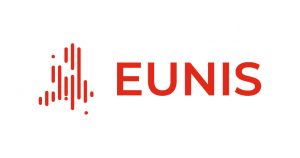 I have long lived in the United States, I worked and lived there and I came back truly European, convinced that we belong to a different culture and a different civilization. This has been a very important reason for my investment in EUNIS from its beginning.
I have long lived in the United States, I worked and lived there and I came back truly European, convinced that we belong to a different culture and a different civilization. This has been a very important reason for my investment in EUNIS from its beginning.
In the US, universities, even public, are modeled as business enterprises. The State contributes little to their funding and its contribution has greatly diminished over the past twenty years. Therefore, the customers, i.e. the students (I hate speaking of students as customers but I use that word deliberately), have sustained a tremendous increase in the price of the product, which is education.
Education is an investment, and like any good investment must be profitable. Hence the big question is: is the investment in long-term studies still of value?
I doubt that in Europe, most students ask themselves this question before starting college studies! Certainly, registration fees have become quite high or very high in some schools, especially business, but this has nothing to do with the United States where it exceeds $ 10,000 per year in the most modest community colleges and where $ 30,000 per year is not unreasonable in the best ones. In fact, many of our colleagues on the other side of the Atlantic are very appreciative of how we come out with so little resources.
Let us wonder about their vision of MOOCs to reduce the cost of education. We must not delude ourselves that what do not pay the students in Europe, is paid by the nation. In addition to the questions that may arise about the limits of systems where the distribution of the social background of students does not automatically reflects that of those who contribute to it, that is the taxpayers, it is certain that European States will not be able, in the coming years, to provide all the means needed by the universities. We must rationalize the use of our staff and building. Thus it is not a dirty word to ask how digital education could help to do better at constant means.
In a book, just translated into English, I wrote that the estimated average cost of a MOOC of six weeks ranges about € 50,000 for the staff. By applying a factor 2 to account for all the rest: accommodation, work equipment, etc., the total cost of a MOOC is, in the range of € 100,000. Other people, on both sides of the Atlantic, agree with this order of magnitude.
Let us now compare the cost of a conventional class and of a blended learning class versus the number of students. The main differences are that blended learning does not need anymore the large theaters and that the students encounter less often their teachers in application classes. Taking into account the number of teachers and the building needed, one comes to the conclusion that, around 400 students, blended learning is more profitable because less teachers and less rooms are required. This figure is very approximate because some courses need more work than others and the critical value may vary but it is certain that for large classes, in the range 200-400 students, the classical way of teaching is more expensive. Moreover studies now show that blended learning, i.e. SPOCs with personal face-to face interaction between students and teachers is the most effective way of learning. It does not decrease significantly the failure rate but those who succeed succeed better.
So why not to shift rapidly to blended learning with SPOCS? We could place our efforts differently and transform teaching hours in more personal exchanges that allow us to better track our students. All indicators therefore seem to go in the same direction and we should enthusiastically move in this new direction!
Let’s be realistic: the first difficulty is that universities today have a limited investment capacity and very few are able to provide neither the financial commitment nor the human resources to respond quickly to such a project. Regarding finances, only the State can provide the necessary resources for this transformation. Regarding the human resources, pooling, working together and using each other courses, cross-universities, is the only solution for a rapid shift. The Virtual University of Bavaria, that many EUNIS congress participants know, is a good example of such pooling system.
This is the easiest part; the second difficulty is to imagine new approaches of teaching, using common courses and preserving at the same time the diversity of approaches in the pedagogy. MOOCs and SPOCs must not lead tomorrow to standardization in the processes of teaching. The majority of teachers has to be convinced that, although they must adapt to a very different approach of knowledge transfer, they will find their place between training sequences without them and keep their individuality. They will become more mentors than knowledge distributors, and this is the core values of any teaching and has no price. The most complicated will be to convince both teachers and students of the educational validity of this approach and to persuade them that it is not a second order education: after all the rich EPFL uses it extensively .
Regarding the students they must be convinced also that this approach is the best one for them. They will have to learn to become more responsible for their education and work differently, not as they often do (and we did before them) just before the exams but continuously all along the year. Our students are less innovative than often said when it comes to ways of learning and they come first to succeed in their exams.
So MOOCs, SPOCs and all that stuff is really a unique chance to modernize the university. Will they destroy it? Certainly not but, as usually when big changes occur, the weakest universities may fail. It is the responsibility of the decision makers, in each of our institution, to be aware of that. And each of us can help them in this move.

